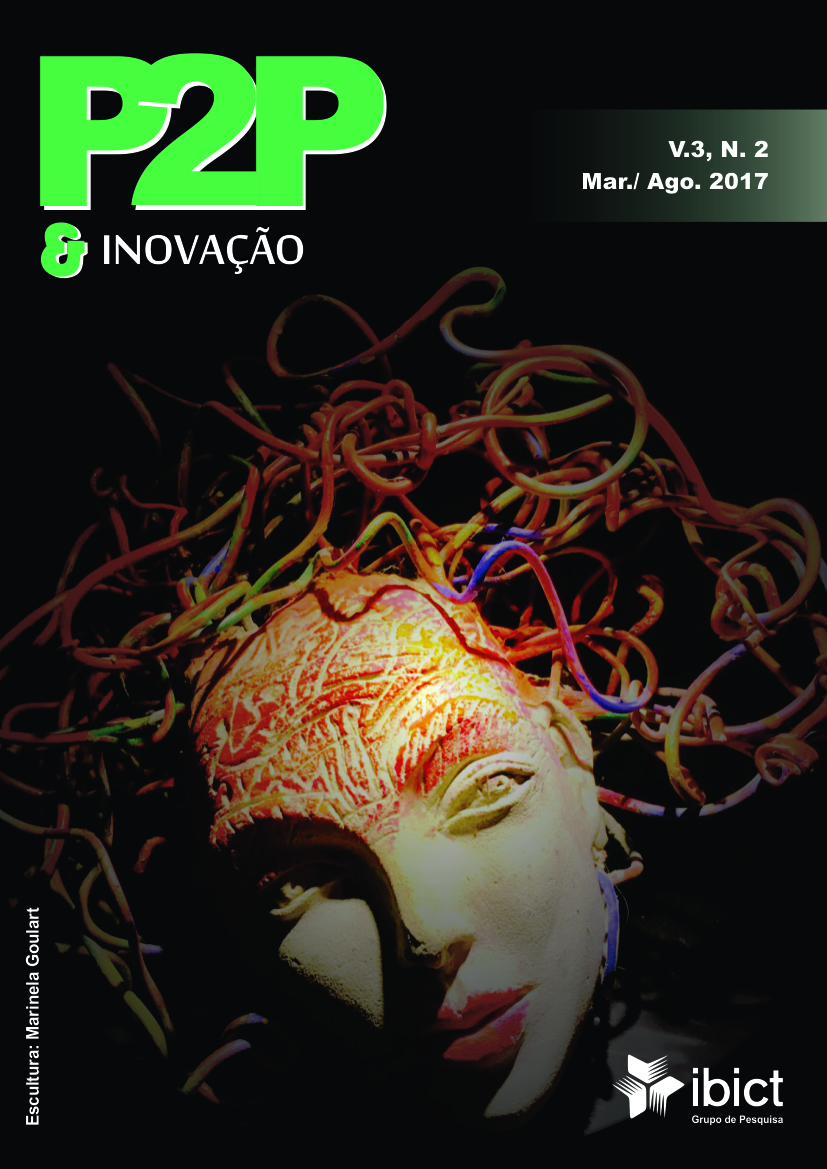AIDEZ LES MISANTHROPES
DOI:
https://doi.org/10.21721/p2p.2017v3n2.p197-213Abstract
In this paper I want to explore into the dark side of art. There has been a growing interest in art from the field of organization studies. Since the publication of Strati’s seminal work (1999) organization studies have embraced art as a fruitful way of studying organizations. Aesthetics helps us to critically understand organizations and uncovers aspects of organization that till now we have overseen. Organizations have an aesthetic quality where sensibility and emotions play an important role. Although I am in no way opposed to an aesthetic study of organizations. I want to argue that when dealing with art we have to consider the dark side of art. Art is in no way something just related to beauty and sensible wellbeing. Organization aesthetics needs to be careful not to fall into a romantic conception of art as a transcendental field enriching our lives, filling us with joy and giving us insight in life. Art also has a dark side. It disorients us, makes us uneasy. Art can make us very gloomy and take away joy. Art shows us a side of life that has by no means moral richness and does not contribute to joy and happiness. After going into the disturbing aspects of art I will examine misanthropy in art and point out some consequences for organizations and organization studies.
Downloads
References
Aler, Jan (1996) De waarheid van de kunst Meppel: Boom
Bauman, Zygmunt (1993) Postmodern thics Oxford: Blackwell
Benjamin, Walter (1982) The work of art in the age of mechanical reproduction, in Illuminations p 217-251. London: Jonathan Cape
Breton, André (1928) Nadja Paris: NRF.
Carr, Adrian and Philip Hancock (2003) Art and Aesthetics at Work Houndsmill: Palgrave.
Cioran, E.M. (1968) The temptation to exist Chicago: University of Chicago Press.
Deleuze, Gilles (1984) Francis Bacon, Logique de la Sensation Paris: La différence.
Gadamer, Hans Georg (1977) Die Aktualität des Schönen Stuttgart: Philip Reclam.
Heidegger, Martin (1927) Sein und Zeit Tübingen: Max Niemeyer .
Heidegger, Martin (1955) Was ist Metaphysik Frankfurt a.m: Vittorio Klostermann.
Heidegger, Martin (1978) Basic Writings (The origin of the work of Art) London: Routledge.
Heidegger, Martin (1980) Being and Time Oxford: Blackwell.
Kant, Immanuel (1968, 1981) Kritik der Urteilskraft: in Werke in zwölf Bände. (band 10) Frankfurt a.m: Suhrkamp.
Kästner, Eberard (1976) Aufstand der Dinge Frankfurt a.m.: Suhrkamp.
Kaulingfreks, Ruud (1984) Meneer Iedereen, over het denken van René Magritte Nijmegen:SUN.
Kaulingfreks, Ruud (1989) Art of the Untruth? On post modern visual art, in Proceedings Xith International Congress of Aesthetics Nottingham: University of Nottingham Press.
Lévinas, Emmanuel (1981) Otherwise than Being, or Beyond Essence The Hague: Martinus Nijhof.
Linstead, Steven and Heather Höpfl (2000) The Aesthetics of Organization London: Sage.
Molière (2000) le Misanthrope an other plays London: Pinguin classics.
Nietzsche, Frederich (1980a) Zur Genealogie der Moral in Kritische Studienausgabe. Herausgegeben von Giorgio Colli und Mazzino Montinari band V. Berlin: De Gruyter (1980b) Die fröliche Wissenscahft in idem band lll.
Plato (1999) Phedrus in Verzameld Werk IV Kapellen: Pelckmans Republic, in idem III
Scutenaire, Louis (1948) Magritte, Antwerpen: de Sikkel.
Strati, Antonio (1999) Organization and Aesthetics London:Sage.
Vattimo, Gianni (1992) The transparent Society Cambridge: Polity Press.
____________________________________________________________
ALER, Jan. De waarheid van de kunst. Meppel: Boom. 1996.
BAUMAN, Zygmunt. Postmodern thics. Oxford: Blackwel, 1993.
BENJAMIN, Walter.The work of art in the age of mechanical reproduction. In: Illuminations. London: Jonathan Cap, 1982, p. 217-251.
BRETON, André. Nadja. Paris: NRF, 1928.
CARR, Adrian; HANCOCK, Philip. Art and Aesthetics at Work. Houndsmill: Palgrave, 2003.
CIORAN, E. M. The temptation to exist. Chicago: University of Chicago Press, 1968.
DELEUZE, Gilles. Francis Bacon, Logique de la Sensation. Paris: La différence, 1984.
GADAMER, Hans Georg. Die Aktualität des Schönen. Stuttgart: Philip Reclam, 1977.
HEIDEGGER, Martin. Sein und Zeit, Tübingen: Max Niemeyer, 1927.
_______. Was ist Metaphysik. Frankfurt a.m: Vittorio Klostermann, 1955.
_______. Basic Writings. (The origin of the work of Art) London: Routledge, 1978.
_______. Being and Time. Oxford: Blackwell, 1980.
KANT, Immanuel. Kritik der Urteilskraft: in Werke in zwölf Bände. (band 10) Frankfurt a.m: Suhrkamp, 1968, 1981.
KASTNER, Eberard. Aufstand der Dinge. Frankfurt a.m.: Suhrkamp, 1976.
KAULINGFREKS, Ruud. Meneer Iedereen, over het denken van René Magritte. Nijmegen: SUN, 1984.
_______.Art of the Untruth? On post modern visual art. In: Proceedings Xith International Congress of Aesthetics. Nottingham: University of Nottingham Press, 1989.
LÉVINAS, Emmanuel. Otherwise than Being, or Beyond Essence. The Hague: Martinus Nijhof, 1981.
LINSTEAD, Steven; HOPFL, Heather. The Aesthetics of Organization. London: Sage, 2000.
MOLIÈRE. Le Misanthrope an other plays. London: Pinguin classics, 2000.
NIETZSCHE, Frederich. Zur Genealogie der Moral in Kritische Studienausgabe. Herausgegeben von Giorgio Colli und Mazzino Montinari band V. Berlin: De Gruyter , 1980a.
_____. Die fröliche Wissenscahft, 1980b.
PLATO. Phedrus. In: Verzameld Werk IV. Kapellen: Pelckmans Republic, in idem III, 1999.
SCUTENAIRE, Louis. Magritte. Antwerpen: de Sikkel. 1948
STRATI, Antonio. Organization and Aesthetics. London: Sage, 1999.
VATTIMO, Gianni. The transparent Society. Cambridge: Polity Press, 1992.
Downloads
Published
Issue
Section
License
The journal is published under the Creative Commons - Attribution - Noncommercial - Share Alike 3.0 Brazil.
The published work is considered collaboration and therefore the author will not receive any remuneration for this as well as anything will be charged in exchange for publication.
All texts are responsibility of the authors.
It’s allowed partial or total reproduction of the texts of the magazine since the source is cited.















